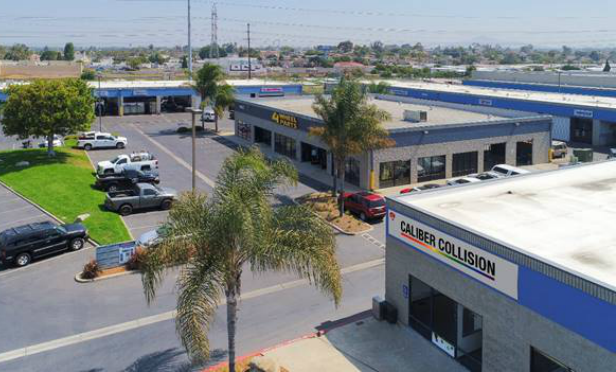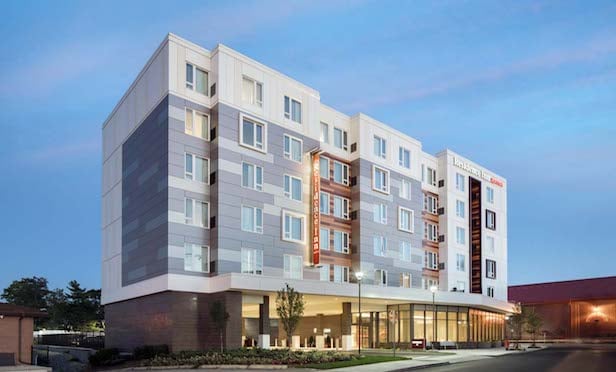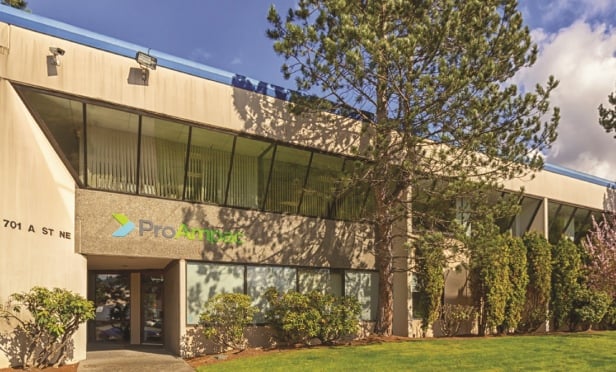 The retail market is hard to pin down these days. In San Diego, we hear about slowing investment activity alongside rising prices, and now—to add to the enigma—the South Bay Autoplex in San Diego's South Bay has traded hands for a whopping 176% return. A group of private investors operating under an LLC purchased the property in 2015 for $5.95 million and implemented a value-add strategy. The improvements, however, were largely management driven, with only $600,000 total investment into the property itself, including lease transactions. The property is an example that management has become integral to the success of a retail asset, along with location and tenant mix as crucial characteristics. The Heritage Group senior directors Dan McCarthy and Kyle Clark represented the seller in the deal, garnering half a dozen offers on the property, while Kidder Matthews' Tom Holland and James Duncan represented the buyer. We sat down with Mark Hoekstra, managing director at the Heritage Group who led the operational changes at the property, to talk about the business plan, marketing process and how this property reinforces the new retail model.
The retail market is hard to pin down these days. In San Diego, we hear about slowing investment activity alongside rising prices, and now—to add to the enigma—the South Bay Autoplex in San Diego's South Bay has traded hands for a whopping 176% return. A group of private investors operating under an LLC purchased the property in 2015 for $5.95 million and implemented a value-add strategy. The improvements, however, were largely management driven, with only $600,000 total investment into the property itself, including lease transactions. The property is an example that management has become integral to the success of a retail asset, along with location and tenant mix as crucial characteristics. The Heritage Group senior directors Dan McCarthy and Kyle Clark represented the seller in the deal, garnering half a dozen offers on the property, while Kidder Matthews' Tom Holland and James Duncan represented the buyer. We sat down with Mark Hoekstra, managing director at the Heritage Group who led the operational changes at the property, to talk about the business plan, marketing process and how this property reinforces the new retail model.
GlobeSt.com: Why was this particular automotive property unique and why did it command so much interest?
Mark Hoekstra: The property is a five-building automotive service center. Many people would look at it and call it industrial, but when I looked at it, I thought that it was unique because it was located in a retail corridor. When cities and municipalities were master planning communities, they lumped automotive into retail. They quickly realized that automotive does not belong in retail because 75% of the dollars spent at the property is spent on labor, and you don't get retail sales tax on labor. For that reason, cities quickly moved automotive to industrial to save retail-zoned properties for businesses that would generate retail sales tax. Any time that you can find an automotive repair shop in a retail-zoned property, buy it because they don't exist any more. This property is located a half a block from one of the busiest intersections in Chula Vista, so many retail establishments are within walking distance. When customers drop their car off for a two-hour service, they can kill time eating or shopping.
GlobeSt.com: Tell me about the value-add strategy that you implemented at the property?
Hoekstra: The property was mismanaged and leased by the former owner. We never thought of this property as anything other than a retail property, so we really went through the process to transform this from down-and-dirty automotive to a cool, well managed, fully leased retail center. We did that by creating a new signage program with a new logo and a new website to give the center a standardized look, and we implemented strict rules so that tenants would not spill into the common areas or parking lots. We really transformed the image of the property, and as such, we bumped the rent considerably. When we took over the property, CAM was at $0.15, and we raised it to $0.26 per square foot. We also staggered rents from $0.96 per square foot to $1.25 per square foot and put all tenants on triple-net leases. We also added national tenants with Safelite AutoGlass, AAMCO Transmissions, 4 Wheel Parts and Caliber Collision, which is the largest auto body retailer in the country.
GlobeSt.com: Because this property straddles the line between retail and industrial, what kinds of investors and capital sources were attracted to this deal?
Hoekstra: Because it is automotive in nature, the field of buyers is smaller than it would have been if it was a traditional retail center. The people that looked at the property were either local investors that had a strong presence in the marketplace, or in this case, an L.A.-based investor in a 1031 exchange and had experience in both industrial and retail. The buyer also happened to have a passion for automobiles as a hobby.
GlobeSt.com: The retail market in San Diego is a bit of a dichotomy, with retail activity slipping but prices heading up. How do you see this property fit into that trend?
Hoekstra: Well-located, well-leased, well-maintained properties demand higher cap rates and higher rents. Our entire focus for the property was to take advantage of its retail and street-front location next to a major intersection. We operate it like a retail center and not like anything else. If you have well-located properties and put the right tenant mix in there, they will perform well. It also comes down to how the property is operated. Our specialty is buying properties that are not operationally ready to be sold. In San Diego County, retail rents are still being pushed. We have properties where we are strategically and selectively pushing rental rates to see where the breaking point is. We haven't hit it yet, but it is not far away.
© Touchpoint Markets, All Rights Reserved. Request academic re-use from www.copyright.com. All other uses, submit a request to [email protected]. For more inforrmation visit Asset & Logo Licensing.






